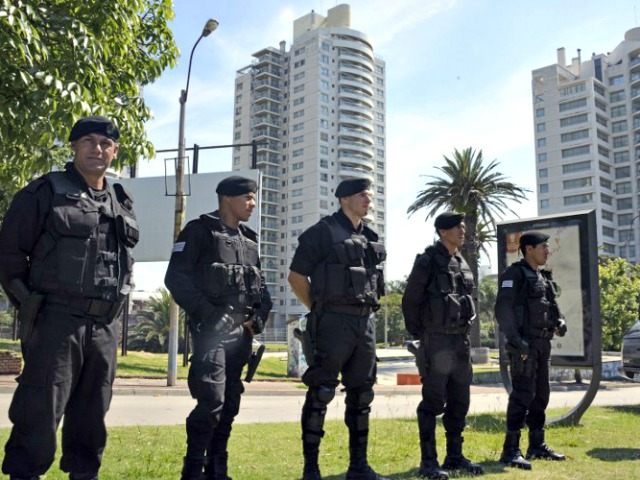Police found a “suspicious artifact” designed to look like a bomb near the Israeli Embassy in Montevideo, Uruguay this week, the fourth such item found and the third this year. Officials found the item on the same day as a scheduled anti-Israel BDS rally before the embassy took place.
The “artifact,” found near a complex known as the World Trade Center in the Uruguayan capital which houses the Israeli embassy, was deemed harmless: a box containing a series of cables to make it look like a homemade explosive device. “Due to the element’s external physical attributes we have identified batteries and electric conductors that make one assume this is an explosive device,” said Fire Department spokesman Leandro Palomeque in a press conference this week. Police deployed explosives experts and bomb-sniffing dogs to confirm the device was not an explosive device despite its appearance.
The police have not mentioned any suspects revealed to have ties to the device, though they are currently inspecting surveillance footage from the area. The device was found during a BDS/anti-Israel ally in front of the embassy attended by around 30 people, reports national newspaper El Observador. Footage from the rally published by Iranian Spanish-language state news outlet HispanTV shows attendees waving Palestinian flags and calling for a national boycott on Israeli products.
The device is the fourth such object found near the Israeli embassy, and few leads have surfaced regarding a culprit. Three of the four findings occurred this year; the first was found in November 2014. Police found the second non-explosive device in February 2015 and at the time summoned an Iranian consultant of the Tehran embassy to Montevideo to answer questions on the matter, following revelations from surveillance footage. In response to be invited to aid the investigation, and later being identified as a suspect, Ahmed Sabatgold fled to Iran. At the time, El Observador reported that Sabatgold was known to not merely hold anti-Israeli views, but as a virulent anti-Semite.
Then-Uruguayan Minister of Foreign Affairs Luis Almagro ordered extra protection for the Israeli embassy in February, telling reporters that the government did not believe there was “an Iranian threat” but that he was “preventing situations from happening.” “There is not a concrete threat,” he explained, “but rather weird facts: a suitcase near a garbage container, another device further on and out of the camera’s sight. Some things I don’t like.”
At the time, Iranian state media accused Israel of planting the bomb itself “in order to damage Iran’s image in the host countries” and “create Iranophobia.”
Following Sabatgold’s flight in February, a third false explosive was found in front of the embassy in July. Police issued a more descriptive statement on that device: a sardine can filled with a battery and wires. Police theorized that the fake bomb was planted to test the responsive abilities of the police and plan a terrorist attack with a real bomb accordingly.
U.S. Southern Command has warned governments in South America of the expanding influence of the Islamic Republic of Iran in the region. In March, SOUTHCOM issued a report estimating that more than 80 “cultural centers” run by the Iranian government and frequented by agents of the Shiite terrorist organization Hezbollah existed throughout Latin America, most in Venezuela, Argentina, Uruguay, and Paraguay. “As the foremost state sponsor of terrorism, Iran’s involvement in the region and these cultural centers is a matter for concern, and its diplomatic, economic, and political engagement is closely monitored,” SOUTHCOM Commander Gen. John Kelly warned.

COMMENTS
Please let us know if you're having issues with commenting.